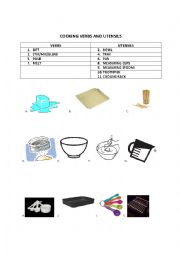
|
Simple Cooking Verbs and Vocab+Recipe
I used this worksheet to introduce a student to the terms he would need in order to bake corn muffins together for Thanksgiving!
Level: intermediate
Age: 7-100
Type: worksheet
Downloads: 4
|
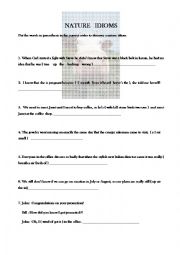
|
Nature Idioms
Unscramble the words in parenthesis to discover a nature idiom. Students can work alone to put the words in order, then go into pairs to deduct the meaning of the idiom from the example.
Level: advanced
Age: 12-100
Type: worksheet
Downloads: 15
|
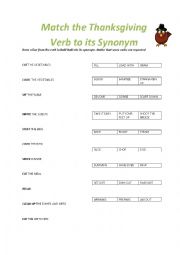
|
Thanksgiving Dinner Synonyms
To introduce upper-intermediate students to synonyms for commonly used verbs. I make 2 copies, and cut one into strips. The student first puts the actions in order from cooking to eating leftovers. She then matches a verb to its 3 synonyms. The worksheet that I haven�t cut up, I then assign for homework along with the exercise of creating new s...
Level: intermediate
Age: 10-100
Type: worksheet
Downloads: 9
|
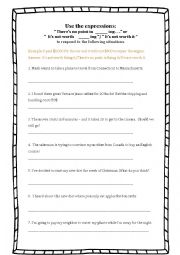
|
No Point In _______ing / It�s not worth _______ ing Ex.
An ex. to practice No point in + gerund, and Not worth + gerund sentences.
Level: intermediate
Age: 14-100
Type: worksheet
Downloads: 11
|
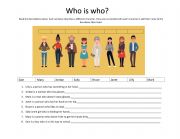
|
Defining Relative Clause with WHO
Can be used to introduce �who� in relative clauses, or as a warm up guessing game. A few different answers can be correct, as long as the student can justify their answers
Level: intermediate
Age: 8-100
Type:
Downloads: 17
|
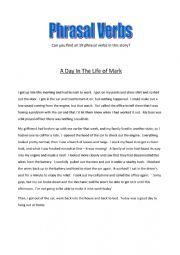
|
Phrasal Verbs Story and Exercises
Use this story to introduce some common phrasal verbs
Level: advanced
Age: 15-100
Type:
Downloads: 23
|